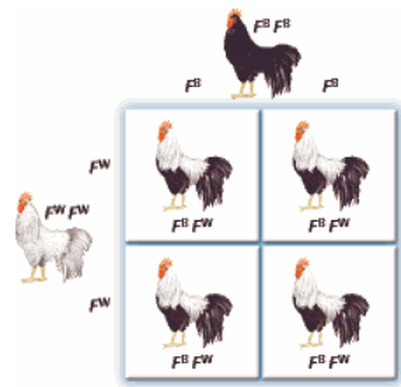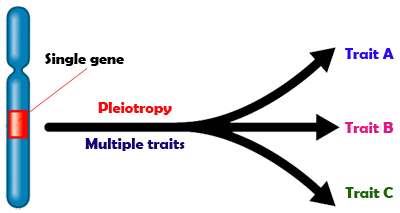INCOMPLETE DOMINANCE occurs when the effects of recessive alleles can be detected to some extent in heterozygotes. An example is snapdragons. Two parents, one red (dominant) and the other white (recessive), when crossed, produces a heterozygous with the traits of recessive alleles, in this case white, in the offspring as the colour of a pink snapdragon.
CODOMINANCE occurs when alleles have approximately equal effects in individuals, making the two alleles detectable in heterozygotes. In other words, both alleles are present in the offspring.
MULTIPLE ALLELES
As Mendel, mentioned, alleles do occur in pairs in individuals. However, multiple alleles may be present if all the individuals of a population are taken into account.
For instance, for Gene B, there could be the normal allele B and several alleles with alterations in the gene named as b1, b2 , b3 and so on. Some individuals in a population may have B and b1 alleles of a gene while others can have b2 and b3 alleles.
Thus, although any one individual can have only 2 alleles of the gene, there are more than two alleles in the population in the whole.
REAL LIFE EXAMPLE: HUMAN ABO BLOOD GROUP
4 combos of 4 blood types as A, B, AB and O. It is determined that red blood cells from one blood type are clumped by an agent in the serum of another type. Serum=Fluid in which blood cells are suspended. It is found that the clumping is a result of the action of an antibody in the blood serum. Antigens responsible for the blood types of the ABO blood group are the carbohydrate parts of glycoproteins located on the surfaces of red blood cell.
- People with type A have Antigen B
- People with type B have Antigen A
- People with type AB have no antigen
- People with type O have Antigen A & B
EPISTASIS
In epistasis, genes interact with one or more alleles of a gene at one locus, inhibiting or masking the effects of one or more alleles of a gene at different locus. The result: Some expected phenotypes do not appear among offspring.
POLYGENIC INHERITANCESome characters follow a pattern of inheritance in which there is a more or less even gradation of types, forming a continuous distribution rather than on or off effects.
RESULT: Polygenic inheritance in which several to many genes contribute to the same character
Other characters that undertake a similar continuous distribution is known as QUANTITATIVE TRAITSPolygenic inheritance can be detected by the defining class of variation:
- Number of individuals in each class is plotted as a graph
- If the plot produces a bell-shaped curve, with fewer individuals at the extremes and the greatest number of clusters around the midpoint, good indication that the trait is quantitative
PLEIOTROPHY
PLEIOTROPHY is defined as single genes affecting more than one character of an organism






No comments:
Post a Comment